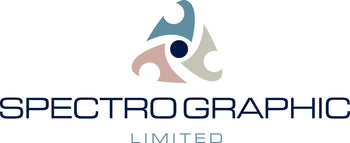
OmegaBelt General Purpose Linisher Grinder
Single belt dry linisher for stock removal of metallurgical samples and can be used after cutting for effective deburring of samples prior to mounting and metallurgical grinding. The high speed bench linisher and grinder is usually a permanent fixture used together with the metallurgical abrasive cutter.
Water cooling of the sample during the grinding operation helps to prevent overheating of the sample and maintain sample integrity.
Planar grinding uses up to P220 – belts, rotating wheels
Start with the grit that removes the damage from cutting – using coarser grits increases time
Used for:
- Remove the damage from sectioning. The depth of damage depends upon the cutting process and the experience of the operator
- This damage can be mechanical damage from the cutting process or grinding burn produced by excessive heat or insufficient cooling
- If the damage from sectioning is excessive it is advised that another sample is cut
- The process uses ever finer grades of grinding paper to remove the damage produced at the previous stage
- At the end of the grinding phase the only damage to the surface of the sample should be that from the final stage
- Produce a sample surface that is ready for polishing
Terms that are frequently used are
- Plane grinding that is the initial stage that ensures that all specimens in a holder are the same level. This is accomplished using a coarse abrasive that removes material rapidly.
- SiC papers used for softer materials
- Al2O3 used for most ferrous materials
- Diamond used for hard metals and ceramics
- Fine grinding that prepares the surface from the sectioning or plane grinding for final polishing. The grinding is carried out using a finer abrasive.
- This process removes the deformation from the plane grinding
- The traditional method is to use continuously finer SiC papers
- The grit size used at the final grinding stage depends upon the hardness of the material – the harder the sample material the lower the final grit size (rougher surface) of the grinding media prior to polishing
- Low carbon steel will have been ground to 1200grit
- High carbon 600grit
- Aluminium between 1200 and 4000grit.
The grinding process
Theory
- The grinding media can be seen as a number of single point tools with random orientation
- The stress at the point of each grain of abrasive results in the tensile strength of the material being exceeded at that point and is removed
- If the stress is too low the material will not be removed
- If the stress is too high the sample may be deformed
- If the abrasive becomes clogged or blunt the cutting will not be efficient resulting in deformation and smearing of the sample.
- When the abrasive is blunt the sample will plough rather than cut that results in plastic deformation and an unrepresentative surface.
- The grinding is carried out wet to prevent heat damage
- Wet grinding also carries away the wear particles preventing clogging of the abrasive extending its life. This also reduces the possibility for embedding of the abrasive in the specimen surface reducing potential for misinterpretation.
Practice
- There are a number of ways to carry out the grinding
- Manual using one of several different methods shown later
- Automatic equipment with presets that control pressure, time and lubrication
- Silicon Carbide (SiC) is the main type of abrasive due to its extreme hardness of 9.5 on the Mohs scale
- Other types of abrasive include
- Alumina (Al2O3)
- Emery (mainly Al203 but softer due to presence of other minerals) although this abrasive cannot be used with water.
- The softer abrasives are used on softer materials to reduce the possibility fro embedment of abrasive into the specimen surface.
- The abrasive takes the form of a number of forms
-
- Sheets
- Belts
- Strips
- Discs
- Loose abrasive
Grades of Abrasive
- Abrasives are available in a number of grades
- The depth of the scratch is dependent upon the grit size
- The “standard” grades used in metallography are 120 -240-320-400-600 mesh although for poorly sectioned samples 60 grit may also be employed.
- Remove the damage from sectioning. The depth of damage depends upon the cutting process and the experience of the operator
- Motor: 0.5 HP Single Phase
- 100mm x 915mm endless belt
- Simplified belt change and alignment mechanism
- Machine Size: 560 x 350 x 250 mm
